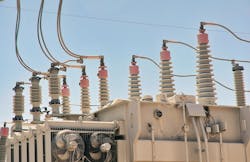Making the Distribution Grid Work: Demand for Smart Transformers Is Rising
Major changes are underway in the energy sector. New technologies, improved energy storage, and the use of renewables are helping the industry modernize and meet the increasing demand for energy.
An essential component needed to deliver energy to customers is the transformer, which steps up and steps down the voltage of electricity heading to customers. The industry has spent millions of dollars replacing aging or outdated pieces of equipment and infrastructure. Transformers are no exception.
For Utilities and partners working on key Infrastructure challenges on the Grid
The T&D World Call for Speakers is open and ready to hear about your projects
T&D World Conference will be Sept. 12-14 in Sacramento: Call for Speakers open all this month
Relevant content on aiding Workers in the Field
Optimizing Mobile Workforces: A Comprehensive GIS
Smart technology is now advanced enough to build smart transformers, which assist with electricity distribution management. Smart transformers are the transformers of the future and will support other grid modernization efforts.
Smart Transformers Market Outlook
Smart transformers rely on built-in, intelligent electronic device (IED) components and sensors, which support the transformation of today’s antiquated energy grid. The world population will continue to increase, as will energy demand. What does the smart transformer market look like, and why is demand increasing?
The smart transformers market is expected to grow at a CAGR of 10% to reach $3.86 billion by 2027, according to a forecast from Market Research Future. Three driving factors are contributing to the growth of smart transformers: Aging transmission and distribution infrastructure, technological progress, and increased awareness of alternative energy sources.
According to the U.S. Department of Energy (DOE), the power grid has fueled the country since the early 1900s, but it does not have the attributes to handle today’s energy needs. Therefore, grid modernization is key if the sector is to control the grid’s future.
Advantages of Smart Transformers
As mentioned above, smart transformers are expected to become more prevalent in the energy industry, which bodes well for utility companies and customers. There are many advantages to smart transformers over conventional transformers, which is yet another reason why demand for them is increasing.
Here are just a few examples of the advantages smart transformers offer:
Remote Monitoring Capabilities
One of the most significant benefits of smart transformers is that they allow companies to remotely monitor their operations, which provides increased energy security. Users can monitor smart transformers and optimize their operations on an as-needed basis. Transformers with remote monitoring features are also designed to constantly regulate the voltage independently.
Remote monitoring is a highly sought-after feature for many pieces of equipment. By replacing old transformers with smart ones, utility companies would be able to focus on other important modernization tasks, such as upgrading energy storage systems, transitioning to renewables, or leveraging other emerging technologies to integrate into the grid.
Higher Efficiency
Energy-efficient industrial equipment is critical for grid modernization and the industry’s sustainable, clean energy future. You might be surprised to learn that more than 40% of the nation’s energy is consumed by building operations.
By implementing energy-efficient appliances and equipment like transformers, end-users can reduce their consumption of energy resources.
Cost-Effectiveness
Large commercial facilities using smart transformers would be able to keep costs down, which is something every company wants in these tumultuous economic times.
Making significant preemptive investments in new technologies – in terms of transformers or other pieces of tech – will save money in the long run, as it results in lower maintenance costs and eliminates the need for future upgrades.
Protection From Power Fluctuations
Another advantage of smart transformers is that they respond to fluctuations in the power grid instantly, acting as voltage regulators. With this form of regulation, companies can ensure the optimized voltage in a transformer goes undisturbed.
The advantages outlined above provide a glimpse into the popularity of smart transformers and illustrate why the demand for them is increasing.
Challenges With Smart Transformers in the Energy Sector
Like most technologies, smart transformers might present challenges to utility companies trying to implement them. Some of the drawbacks of smart transformers include:
● Underdeveloped countries lack the infrastructure needed to integrate smart transformers
● Cybersecurity issues could crop up and pose risks for utility companies and end-users
● High installation costs are barriers to entry
● Lack of government initiatives is a restraint in the smart transformers market
Generally speaking, modernizing utilities is a challenge in and of itself. It takes a considerable amount of time, money, effort, and collaboration to successfully update an entire nation’s energy supply.
The Emergence of Smart Transformers
How will the obsolete energy grid handle these sharp increases and remain stable simultaneously? There’s no clear answer to that question, but it is expected that smart technology will guide companies through the Industry 4.0 era.
The U.S. DOE and other stakeholders are announcing some initiatives and funding opportunities to modernize the energy grid, but these changes won’t happen overnight. As grid modernization becomes more of a priority, the role of smart transformers will become more important to utility companies.
- - -
About the author: Emily Newton is an industrial and tech journalist who’s passionate about how technology is revolutionizing each sector. She has over five years experience writing and editing and enjoys her role as Editor-in-Chief of Revolutionized. See more of her stories for Energytech below.
What can Universities do to earn an A+ in Renewable Energy use
About the Author
Emily Newton
Emily Newton is an industrial and tech journalist who’s passionate about how technology is revolutionizing each sector. She has over five years experience writing and editing and enjoys her role as Editor-in-Chief of Revolutionized.
